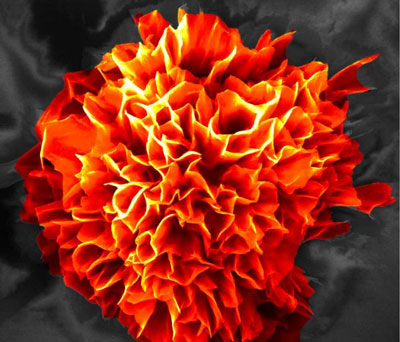| Posted: Nov 12, 2015 |
Light wave technique an advance for optical research
(Nanowerk News) RMIT University researchers have developed artificial microflowers that self-assemble in water and mimic the natural blooming process, an important step for advances in frontier-edge electronics.
|
 |
| This is a digitally-colored microflower magnified 20,000 times. (Image: RMIT University)
|
|
Flower-shaped structures have been the focus of research because their distinctive surfaces offer exciting potential for applications in a range of fields - from optoelectronics and chemosensors to nanotechnology, biotechnology, biomedicine and organic electronics.
|
|
The team from the RMIT-Indian Institute of Chemical Technology Research Centre has for the first time developed microstructures shaped like flowers that build through self-repeating arrangement in water.
|
|
Lead investigator Dr Sheshanath Boshanale said the field of organic flower-shaped morphology was still in its infancy.
|
|
"This is the first time flower-shaped microforms have been developed in a water solution, opening an exciting new pathway for further research," he said.
|
|
"The artificial blooms developed by our team are just 10 microns wide - about 10 could fit along the width of a strand of human hair.
|
|
"While tiny, they have potential to make a big impact by enabling researchers to easily and reliably build microflowers and use them to break frontiers in a range of scientific fields."
|
|
To create the microflowers, researchers mixed two organic components (NDI-bearing phosphonic acid and melamine) in water, which is then evaporated. The artificial microflowers take about three hours to fully develop, mimicking the way natural flowers bloom.
|
|
The research has been published in Scientific Reports.
|

